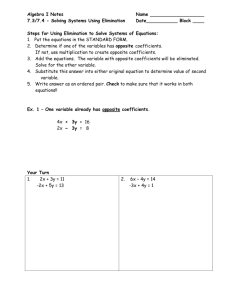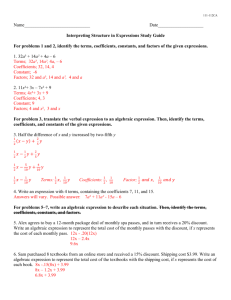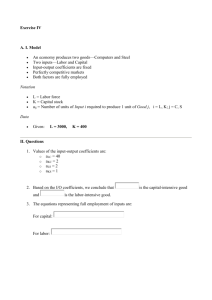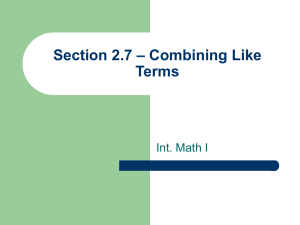Activities of hydrogen ion from pH measurements
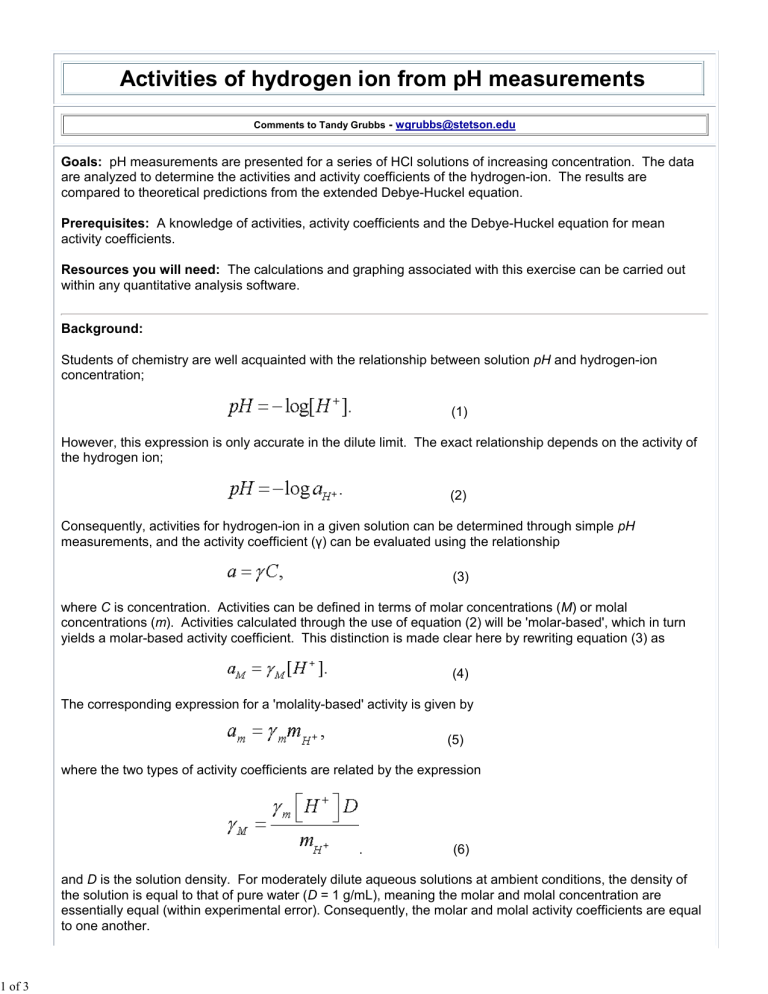
1 of 3
Activities of hydrogen ion from pH measurements
Comments to Tandy Grubbs - wgrubbs@stetson.edu
Goals: pH measurements are presented for a series of HCl solutions of increasing concentration. The data are analyzed to determine the activities and activity coefficients of the hydrogen-ion. The results are compared to theoretical predictions from the extended Debye-Huckel equation.
Prerequisites: A knowledge of activities, activity coefficients and the Debye-Huckel equation for mean activity coefficients.
Resources you will need: The calculations and graphing associated with this exercise can be carried out within any quantitative analysis software.
Background:
Students of chemistry are well acquainted with the relationship between solution pH and hydrogen-ion concentration;
(1)
However, this expression is only accurate in the dilute limit. The exact relationship depends on the activity of the hydrogen ion;
(2)
Consequently, activities for hydrogen-ion in a given solution can be determined through simple pH measurements, and the activity coefficient ( γ ) can be evaluated using the relationship
(3) where C is concentration. Activities can be defined in terms of molar concentrations (M) or molal concentrations (m). Activities calculated through the use of equation (2) will be 'molar-based', which in turn yields a molar-based activity coefficient. This distinction is made clear here by rewriting equation (3) as
(4)
The corresponding expression for a 'molality-based' activity is given by
(5) where the two types of activity coefficients are related by the expression
. (6) and D is the solution density. For moderately dilute aqueous solutions at ambient conditions, the density of the solution is equal to that of pure water (D = 1 g/mL), meaning the molar and molal concentration are essentially equal (within experimental error). Consequently, the molar and molal activity coefficients are equal to one another.
2 of 3
In electrolytic solutions, a convention has been adopted whereby one assumes that the non-ideality of the solution is shared by the cation and anion. This is accomplished by defining a mean-activity coefficient according to the expression
(7) where and are the number of cations and anions, respectively, in one formula unit of the electrolyte.
A number of theoretical approaches are available for estimating mean activity coefficients. One expression that is valid up to moderate concentrations is an empirical modification of the Debye-Huckel limiting law (the
‘extended’ Debye Huckel equation) given by
(8) where A is a constant the depends on properties of the solvent (0.5085 for water at 25°C), z
+
and z
-
are the ionic charges, I is the ionic strength, and B is an empirical constant. Activity coefficients calculated using equation (8) are molal-based.
The exercise outlined below will involve using pH data to experimentally determine activity coefficients for hydrogen-ion and subsequently using this data to test the validity of 'extended' Debye Huckel law.
Experimental Data:
The following table gives experimentally determined pH values for a series of HCl solutions of increasing concentration at 25 °C.
Molar Concentration of HCl Experimentally Determined pH
0.00050
3.31
0.0100
0.100
0.40
2.04
1.10
0.52
Data based upon information contained in Christopher G. McCarty and Ed Vitz*, Journal of Chemical
Education, 83(5), 752 (2006) and G.N. Lewis, M. Randall, K. P:itzer, D.F. Brewer, Thermodynamics
(McGraw-Hill: New York, 1961; pp. 233-34).
Exercise:
1.
2.
3.
For each solution, calculate the pH that would exist if equation (1) is assumed to be accurate (i.e. if molar concentrations can be used instead of activities). Then calculate the pH error ( ∆ pH) by subtracting your answer from the real experimental pH values in the above table. Estimate the concentration above which the error in using equation (1) becomes greater than 5 percent.
Calculate the molarity-based activity of H + for each solution from the pH value. Also calculate the molar-based activity coefficient of H + for each solution. Since each of the solutions are relatively dilute, the activity coefficients that you obtain can be assumed to represent molal-based activity coefficents.
You will now use the data from step (2) to test the validity of the extended Debye-Huckel limiting law.
First calculate the ionic strength for each solution and in each case determine a value for the empirical constant B in equation (8). How well does equation (8) describe the data (i.e. do you obtain a relatively constant value for B or does is vary over the range of the data)? Is there any data point that you should consider throwing out? Pick a representative ('average') value of B and then plot the mean-activity coefficients given by equation (8) with your experimental activity coefficients. Does the extended
Debye-Huckel equation fit the data well?
3 of 3
Suggestions for improving this web site are welcome. You are also encouraged to submit your own data-driven exercise to this web archive. All inquiries should be directed to the curator: Tandy Grubbs, Department of Chemistry, Unit 8271, Stetson University, DeLand, FL
32720.
wgrubbs@stetson.edu

